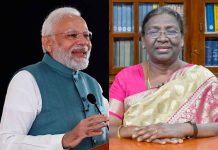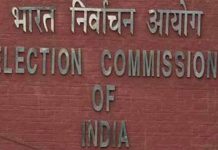
THE ADIVAANI time machine needs your help,” goes the subject line of the email Ruby Hembrom sends out to the world. Time machine. That’s how Hembrom looks at her nascent attempt at creating a publishing house for India’s indigenous population: a time machine that documents Adivasi history and culture, fundamentally an oral tradition, before they are forgotten in the wake of modernity. Running the machine, of course, isn’t free, and Adivaani’s teething troubles are giving Hembrom — who describes herself as “just a regular working-class Adivasi girl, trying to make ends meet, with a treasure of an idea” — sleepless nights, and have prompted an attempt at crowdsourcing funds through the Internet in order to survive.
Enrolled in a publishing course last year, Hembrom was surprised that there was no platform for Adivasi literature on the lines of Urvashi Butalia’s Kali for Women or S Anand’s Navayana, which has won accolades for publishing Dalit authors, and decided to start one. The course helped; one of her fellow students was Mexican journalist Luis Gómez, who had over 20 years of experience working with indigenous people in Latin America, and had pioneered an attempt at helping the Aymaras of Bolivia tell the stories of their victory in the famous water war of 2000. “Putting down the stories of indigenous people in books allows the stories to go on, and allow future generations to look back, not to recreate the past, but to come together around their shared heritage,” he says.
With Gómez and Tudu’s support, Hembrom began Adivaani by translating her father’s history of the Santals into Santali. Santal: Sirjon Binti Ar Bhed-Bhangao garnered a lot of praise, not only for its content, but also the reasonable price and the quality of the publication, unprecedented for Santali books. Producing the book also opened her eyes to the stereotypes within the publishing industry.
“Our cover was black,” she recalls. “I went to the press, and this lady, who’s worked there for a long time, looks at the book and says, ‘Oh, Santali! Black is too sophisticated a colour for these backward Santals.’” This racism, says Gladson Dungdung, author of Whose Country is it Anyway?, Adivaani’s third release, is also seen in how mainstream publishers reject books by Adivasis. “I know writers who have more than 200 poems in their diaries, but don’t get published because publishers don’t think there is a market for them,” he says. Dungdung feels that Adivasis have been treated more as objects than subjects for literature, and cites the role of books in the Dalit movement, saying that the thriving publishing industry for Dalits means that they can speak and write for themselves, while Adivasis still need others to take up their cause.
Dungdung’s book was released at the recent New Delhi World Book Fair, where Adivasi literature was a major theme. Also released there was Hembrom’s We Come From The Geese, the first of a series of three books on Santali creation stories, which she conceived as a cluster project during her publishing course. “An indigenous scholar from Shillong kissed the book, and asked us to tell their stories as well,” she says. Another professor volunteered to write the creation stories of the Mundas. Hembrom says she wants to expand Adivaani’s scope to a pan-India one, that the focus on Santals is only a natural starting point, since both she and Tudu belong to the tribe. She intends the books to be aids for Adivasi children to learn English as well as read the stories of their own people. A lot of schools in Jharkhand have picked it up for their libraries, she says, while a number of colleges have asked for copies of her father’s book to include in their syllabus.
Bookstores, however, haven’t been as enthusiastic. Returning to Kolkata from Adivaani’s triumphant releases in Delhi, Hembrom found a number of people had written to them asking for their books. But setting up a distribution system has been the most disheartening experience, she says, as every distributor and bookstore she contacted turned her down, saying they were not interested in “such kinds of books”. Currently, only three bookstores — one in Kolkata, two in Ranchi — carry Adivaani’s books, which has made funding future projects very doubtful. But Hembrom refuses to give up. “We are in a hurry,” she says. “The urgency of recording every Adivasi narrative cannot be stressed enough. We cannot risk losing indigenous languages, folklore, literature, traditions and identities. We refuse to be a forgotten people.”
ajachi@tehelka.com













